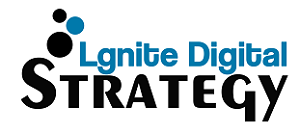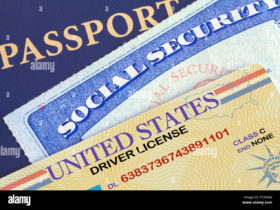According to digital accessibility principles, all users, regardless of circumstance, should be able to access and use digital resources. It’s important to remember that not everyone uses and wants the same digital products and services.
Many people completely disregard them. When it comes to the precision with which information is provided, people with learning disabilities may have different requirements than people with visual impairments.
Consequences of Inadequate Accessible Technology
For a variety of reasons, universal digital access is critical. As a result, people with disabilities may have better computer skills and easier access to information. Furthermore, this may make it easier for everyone to use digital resources. People with a variety of disabilities benefit from advancements in digital accessibility. Blindness, poor eyesight, deafness, and movement disorders are examples of impairments.
Accessibility may provide additional benefits in addition to blindness, restricted vision, color blindness, deafness, and mobility challenges.
Even people in good physical health may benefit from increased digital accessibility. It may, for example, make it easier for senior citizens to use various types of technology. Those who do not speak English as their first language may find it easier to access digital information and services.
The widespread availability of digital information has had numerous beneficial consequences. It may make it easier for businesses to communicate with a larger consumer base. Even if they are unable to access your digital products or services, the general public can be contacted. You can set yourself apart by offering services that no one else in your profession or business offers. As a result, many people who were previously ineligible for your company’s benefits will now be eligible.
Techniques for Creating Universal Digital Accessibility Technology
Even if it appears obvious, it is critical to remember that the information you provide should be as straightforward as possible. The solution is to communicate clearly and without the use of technical jargon. You should also make your content available in alternative formats, such as audio and video, for visitors who prefer not to or are unable to read.
Aids to Visualization
Using graphics and videos, you can pique the audience’s interest and make the material easier to understand. Overcoming accessibility issues, on the other hand, necessitates effective implementation. Those who are unable to access visual content, such as images or films, will be able to understand the message if a text counterpart is provided. Adjust the contrast to ensure that people with vision impairments can see your photos and videos.
Recognize the Law
One of the laws and regulations that govern digital accessibility is the Web Content Accessibility Guidelines (WCAG) 2.0. WCAG 2.0 is just one of many existing norms and standards. These laws and norms are being adopted by an increasing number of countries. To ensure that your products and services meet the standards, you must stay up to date on any changes.
Why Is Digital Access So Critical?
A disability, according to the World Health Organization, includes impairments, activity limitations, and participation restrictions. Disability can result from a person’s physical, sensory, cognitive, intellectual, or behavioral health. One billion people are expected to live with some form of impairment, making it one of the world’s most common health issues.
Despite this, access to services such as education and employment can be difficult for people with disabilities. One way to overcome these constraints is to increase the availability of digital services like text-to-speech (TTS) APIs and content. A significant part of this is ensuring that people with visual, auditory, cognitive, and intellectual disabilities can use websites and mobile apps. Making digital content and services more accessible to people with disabilities can help them live independently and meaningfully participate in society.
Methods for Physically Handicapped People
Access to digital content is difficult for people with disabilities. Screen reader software, which reads written text aloud, may be beneficial to people with visual impairments. For deaf users, audio and video content may require captions or transcripts. A more concise presentation of knowledge may be required for people with cognitive limitations. Furthermore, content accessible through alternative input modalities, such as switches or eye-gaze sensors, may be required for those with physical disabilities. If digital content creators cater to people with different needs, they may reach a larger audience.
Blind and Visually Impaired Methods
When working with digital information, it is critical to remember that not everyone interacts with the physical world in the same way. One example is how the blind, who have poor or no vision, rely on other cues to assimilate information. Precautions must be taken when creating digital materials for children. A descriptive text option must be available for each image. Closed captioning is also required for videos so that the deaf and hard of hearing can understand the dialogue. You can improve access to your digital content by taking the following steps.
Techniques for the Deaf and Hard of Hearing
Creating digital content necessitates taking into account the needs of every possible viewer. This includes people who, for a variety of reasons, may struggle to understand how standard knowledge is presented. Closed captioning allows those who are deaf or hard of hearing to continue enjoying digital entertainment.
Many factors must be considered when creating closed captions for digital content. First and foremost, the captions must be understandable. By using large font sizes, you can avoid using complex fonts that can cause eye strain. Check to see if the audio and captions are in sync. Either use software that automatically generates captions or manually transcribe the audio track after creating captions. Finally, thoroughly check the captions for inaccuracies.
By following these guidelines, you can ensure that your digital content is accessible to everyone, regardless of physical limitations. To make your content more accessible, use technology such as closed captioning, audio description, and sign language interpretation. Incorporating their perspectives will make it easier to create digital content that appeals to all demographics.
Methods for People Who Have Had a Brain Injury
Several factors must be considered when creating digital content for people with cognitive disabilities. It is critical to remember that each person is unique and requires a customized approach. However, there are some general guidelines that can be followed to make data more understandable. Disability services, for example, recommend using images and simple language. As a result, the reader may find the subject easier to grasp. It is also necessary to provide numerous forums for debate and criticism. Allowing the reader to interact with the content in this manner improves information retention. Designers can create digital content that is beneficial to all consumers by keeping these criteria in mind.
Click here to learn more about how QualityLogic can help you create accessible, high-quality digital content.









